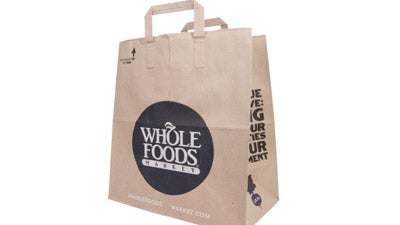
It surely is the Holy Grail for food immpreneurs: getting your products on the shelves of Whole Foods. With 325 stores in the U.S., Canada, and the UK, the $10 billion Austin-based natural and organic food retailer makes a point of carrying new products from fledgling local manufacturers. Each of its 11 regions, in fact, aims to have about 10% to 15% of its grocery goods sourced locally. And those products often mirror the national origins or ethnic tastes of the area’s consumers.
But the competition is fierce. Buyers consider perhaps hundreds of new items every year. And the shelves already may be filled with products similar to yours.
Here’s what Errol Schweizer, executive global grocery coordinator, told us about how to get into Whole Foods—and turn your product into a sensation once it hits the shelves.
Immpreneur: Can you give us an overview of the process involved in selling to Whole Foods?
Schweizer: Whole Foods is a very decentralized company. Purchasing happens at the store level, at the regional level and the national level, depending on the location.
For example, a lot of our folks get started at the store level in their metro area where they live. But that’s not allowed in every region. In some areas, if you go to your local store, you’ll be referred to the regional grocery buyer, because that’s what your first point of contact should be. In other regions, you’ll contact local “foragers,” folks who are specifically tasked with building vendor relationships in their local communities.
It’s almost like we have 11 separate companies. A lot of what each one does is try to set up its own culture when dealing with vendors in that area.
But those who work for Whole Foods are foodies, they’re really passionate about food and food production and they’re usually ahead of the trends. So they’re always looking out for cuisines that are trending at the moment.
Immpreneur: So, what’s the best way to pinpoint whom to contact first?
Schweizer: I would say you should check with your local store, asking for the grocery buyer, to find out the best way to proceed. Remember: If you do that, it’s always a good idea to bring your product with you. And also call your regional office to see what they recommend. You can get the contact information from the web site. Ask for the regional buyer who manages the category in which you’d like to sell your product. For instance, if you have a packaged good item that would potentially be carried in the grocery aisles, you would need to ask for the regional grocery buyer.
Another first step is to go to your local store to see whether it carries anything that could compete with your product. If you do find something, you might be able to offer something different enough that you can differentiate yourself from it. Also get in touch with distributors in the area known for handling smaller, unique products. They might be willing to recommend you.
Immpreneur: What happens next?
Schweizer: You should expect the buyer to get back to you quickly, if he or she doesn’t tell you something right away. They might tell you they’re not interested. Or they might ask you to come in for a meeting. Or if it’s a regional buyer, they might decide your product needs to be tested in a smaller market and end up recommending you to a particular store.
If you’re scheduled for a meeting, remember that most regions follow a category review schedule. It’s a method of sanity for buyers because in some stores we carry 65 or 70 categories. So we try to look for products in 8 to 10 categories a month.
Immpreneur: How should an immpreneur prepare for the meeting?
Schweizer: Globally, we’ll send you a power point template for you to fill out. You’ll include basic stuff about your product that we review in advance and then keep on file. Otherwise, you’ll put together your own summary and bring it with you. In either case, we need a description of what your product is, the recipe, the ingredients, the nutritional value.
In the meeting, there will be an interplay. We may just want to make sure all the ingredients are lined up. At other times, our guys may have suggestions about anything from packaging to nutritional content. But always be prepared for a dialog. Our folks are sharp. But they’re fair and really passionate about food.
Keep in mind, however, we can smell crap from a mile away.
Immpreneur: Can you tell us more about what you look for?
Schweizer: I’ll tell you what I usually look for, I look at:
- justification for your costs
- the ingredients
- your story
I want to hear what sort of passion the vendor has—integrity, energy and passion. You know, this is my grandma’s recipe. She cooked it in the old world and I’m adapting it to the American culinary habit. And I’ll ask something about your vision for the company, where you’re going with it, why you want to get into the food business, because it’s not easy. We’re wary of food vendors who want to grow really fast and sell out. Are you in it for the long haul? Then I may make suggestions like, for example, about different ingredients you could use.
I also really talk about promotion, because the most important thing any vendor can do is budget for promotion, including demos in stores which can really help you get your product noticed, if you’re a new vendor.
Immpreneur: How quickly do you decide whether or not to carry a product?
Schweizer: If you’re talking about starting out nationally, it’s rare my team immediately says, let’s go ahead with it. We have a consensus decision made by our 11 regions. If you’re talking to one region, which is more likely, the regional manager might make the decision right there. But sometimes, the person will have to think about it or talk to some store buyers for their thoughts.
They may decide to put it in one or two stores or they may want to get it out everywhere if it seems like something really exciting. There’s a Greek salad dressing from someone’s family recipe selling in the Rocky Mountains region and the regional buyer is really into it and has it on display everywhere.
It’s really about how much you can handle. Some folks can handle multiple stores. But often, you need to start small.
Often, during your meeting, they may ask you to make changes and to come back again with those updates. In many cases, that involves ingredient sourcing and nutrition. Or they may be changes you need to make if there already are other products like yours for sale. If it’s something that sells well, we might make suggestions for changes that can make yours different. We might suggest you look at sourcing an ingredient organically. Or we might refer you to an organic protein source. Or ask you to dial back on sodium. Or pull out the natural flavors and use real flavor, instead. There are like 15 types of granola in the Boulder area. Somehow, each one is different from the others. But they sell well.
Immpreneur: What should you do once your product has been accepted?
Schweizer: You’ve got to be out there, on the pavement. You have to decide how much time you have, how well capitalized you are. As I said, budgeting for promotion is very important. Some people hire sales reps. But no matter what, you have to do demos. We had a cookie vendor selling a homemade recipe and she was in the store more than I was. She ran the production, managed the budget, set up the demos. This woman was a machine and it made her really successful. Also she was much loved in the store, it was like she was one of the team.
As you grow, you also probably will need to use a distributor. We have distributors who mostly handle local and smaller vendors whom we recommend. Sometimes the buyer will say to a vendor, hey I’m going to put you in touch with these guys. Sometimes the distributor actually helps us with sourcing, scouting out cool stuff.
You should still being doing demos. And also checking the shelves to see if something is not in stock, to let the distributor know. The operational part of Whole Foods often is up to the vendor. Having someone to keep an eye on things is appreciated by the staff. So you might have a sales rep, or even a family member, who goes in regularly, builds a relationship with the store buyer and then can say, “Hey, I noticed I’m out of stock. Can I go fill that for you?” And the buyer might tell you to go ahead and do it. Or maybe there’s a new order coming in the next day and you don’t need to bother.
A lot of vendors who are selling foods from their old country, or from family recipes, and working to build a business, have an incredible advantage. They need to share their story. Customers get really inspired and excited and want to support that kind of thing.
This interview was originally published by Immpreneur
Published: November 14, 2013
2402 Views
2402 Views











